Rhubarb’s unique tartness can be hard to replace, but whether you’re baking a pie or making chutney, these 7 substitutes for rhubarb deliver flavour, colour, and texture just when you need it most.
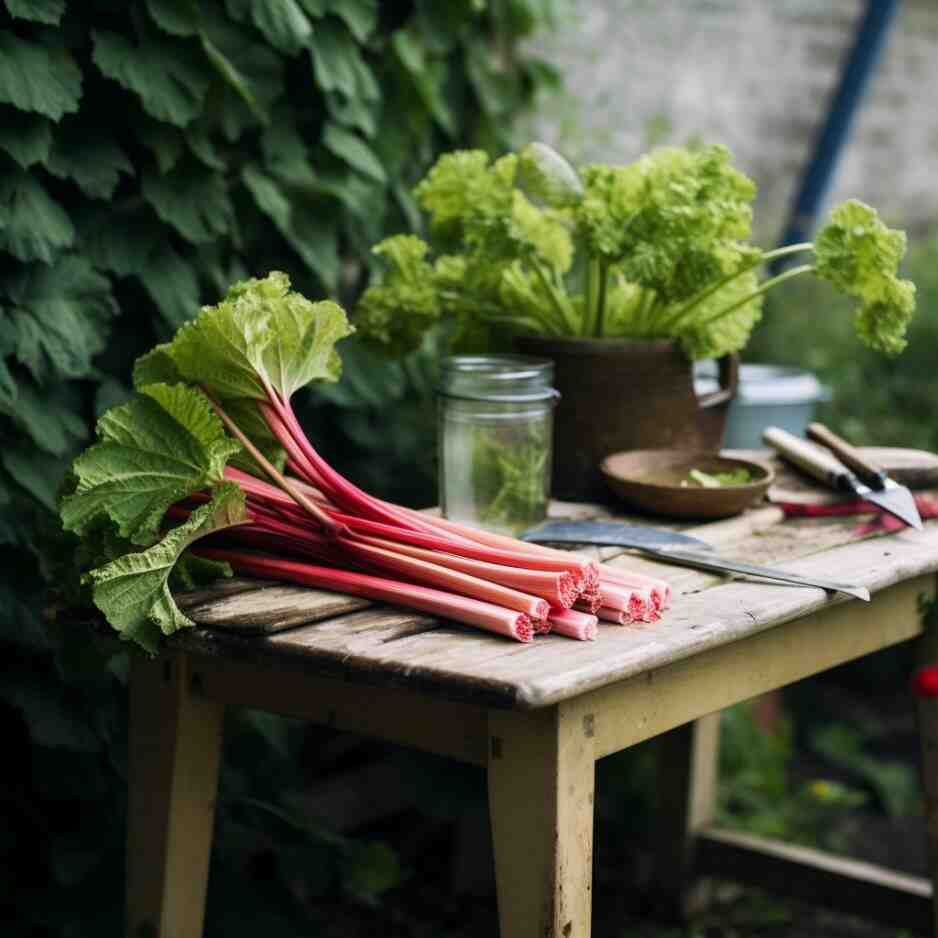
- What is Rhubarb and Why Is It So Unique??
- What Does Rhubarb Taste Like?
- Top 7 Substitutes Jump List
- Strawberry Rhubarb Pie Substitute
- Baking Substitutes
- Savoury Substitutes
- How to Choose the Right Substitute Based on Recipe Type
- Top 7 Substitutes In Detail
- Nutrition Table
- FAQs
- Conclusion
✍️ Quick Rhubarb Substitutes Comparison
Not sure which substitute to use? Here’s a quick-reference table to help you choose based on flavour, texture, and what you’re making.
| Substitute | Best For | Notes |
|---|---|---|
| Strawberries | Crumbles, pies | Add lemon juice for tartness |
| Green apples | Sauces, pies | Pair with berries for colour and balance |
| Cranberries | Sauces, jams | Naturally tart; sweeten to taste |
| Raspberries | Baking, compotes | Softer and sweeter; mix with lemon or apple |
| Red currants | Baking, sauces | Tart and vibrant; closer flavour match |
| Gooseberries | Crumbles, compote | Closest flavour and texture to rhubarb |
| Frozen rhubarb | Any dish | Use directly from frozen; adjust for moisture |
What is Rhubarb and Why Is It So Unique?
Rhubarb is a perennial plant known for its vibrant red stalks and tart, tangy flavour. While technically a vegetable, it’s often used like a fruit in sweet and savoury recipes. Its sharp acidity makes it a favourite in spring pies, jams, and sauces.
Nutritional Highlights of Rhubarb
Rhubarb is:
- Low in calories (just 21 kcal per 100g)
- Rich in calcium (86 mg) and Vitamin C
- High in antioxidants like anthocyanins (especially in red stalks)
It also contains oxalic acid, which gives its tang but should be moderated in raw consumption.
Common Culinary Uses for Rhubarb
Rhubarb is commonly used in:
- Rhubarb Pie
- Crisps & Crumbles
- Compotes & Jams
- Sauces (for pork or poultry)
- Cocktails & Beverages
- Savoury chutneys or salsas
Its unique ability to transform both desserts and savoury dishes is what makes it hard to replace.
What Does Rhubarb Taste Like?
Rhubarb has a bold, astringent tartness, sometimes described as lemony or sour green apple with earthy undertones. The flavour is often too intense to eat raw, which is why it’s typically cooked with sugar.
When substituting rhubarb, it’s important to find alternatives that match:
- Acidity
- Color
- Structure when cooked
- Compatibility with both sweet and savoury applications
Quick Answer: What’s the Best Substitute for Rhubarb in Pie?
For strawberry-rhubarb pies, or any classic rhubarb pie:- Mix ¾ cup tart green apples + ¾ cup cranberries per 1.5 cups of rhubarb.
- Add 1 tbsp lemon juice to replicate rhubarb’s acidity.
- Adjust sugar levels—cranberries are more tart, strawberries sweeter.
Top 7 Rhubarb Substitutes (With Best Uses)

- Use in equal quantity as rhubarb
- Add a tablespoon of lemon juice to boost tartness
- Pros & Cons✅ Hold their shape when baked✅ Readily available❌ Less colourful❌ May require extra sweetener to balance flavour
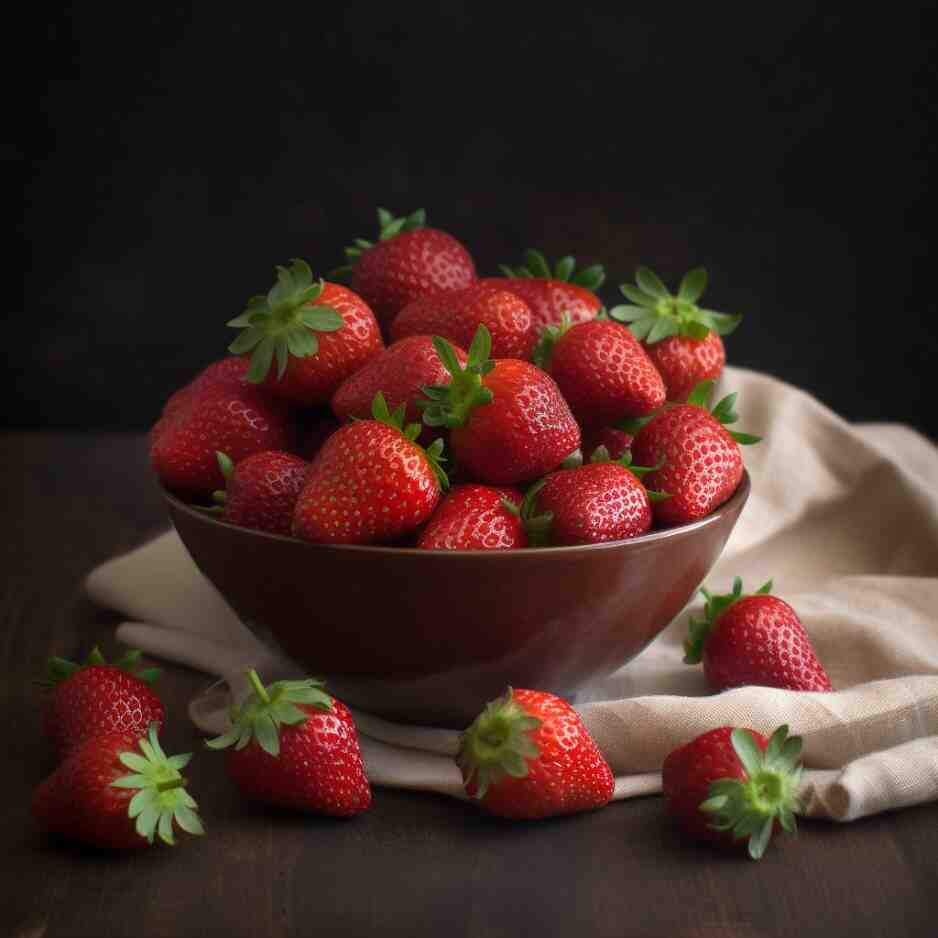
- Use 1.5x the amount of strawberries to replace rhubarb, as strawberries are sweeter.
- Add lemon zest or 1 tbsp lemon juice per cup to increase tartness and balance flavours.
- Best when combined with tart fruits like cranberries or gooseberries for full flavour balance.
- Pros & Cons✅ Naturally sweet and juicy✅ Adds vibrant colour to desserts✅ Widely available year-round❌ Softer texture when cooked (can become mushy)❌ Less tart than rhubarb—needs acid adjustment
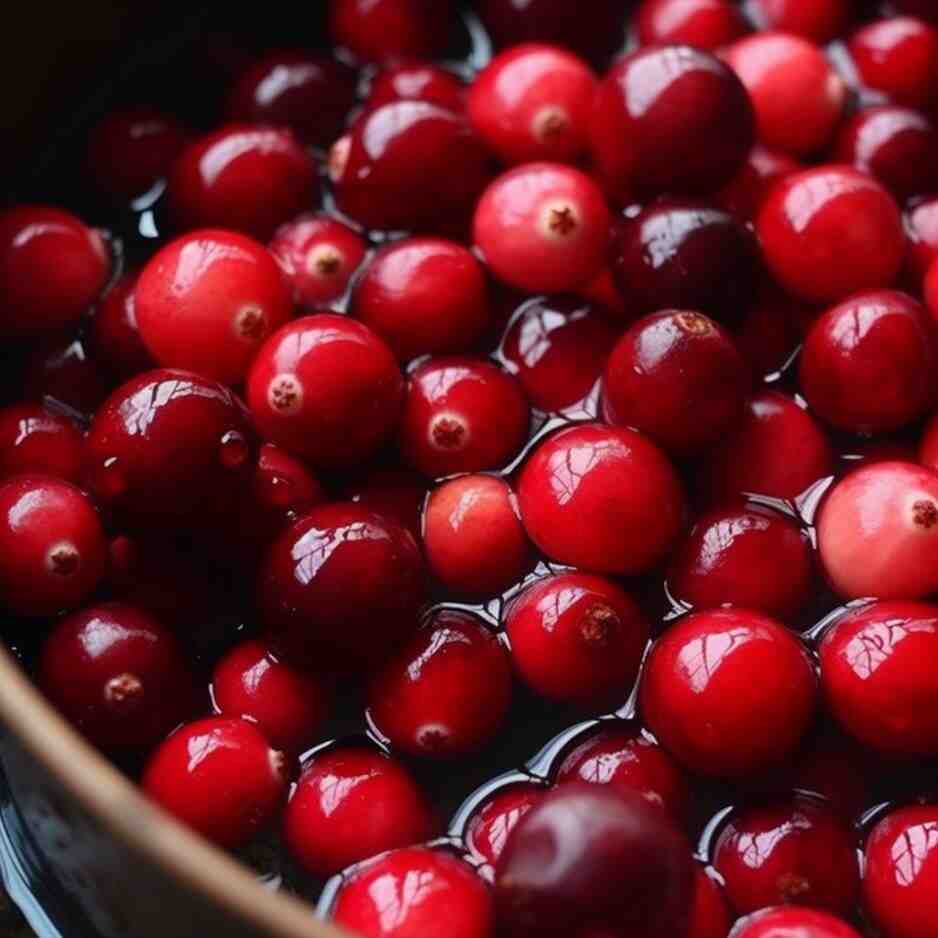
- Use cranberries in a 1:1 ratio to replace rhubarb when cooking
- Best used in sauces and chutneys where their tartness shines.
- Can be combined with strawberries or apples for balanced flavour in pies
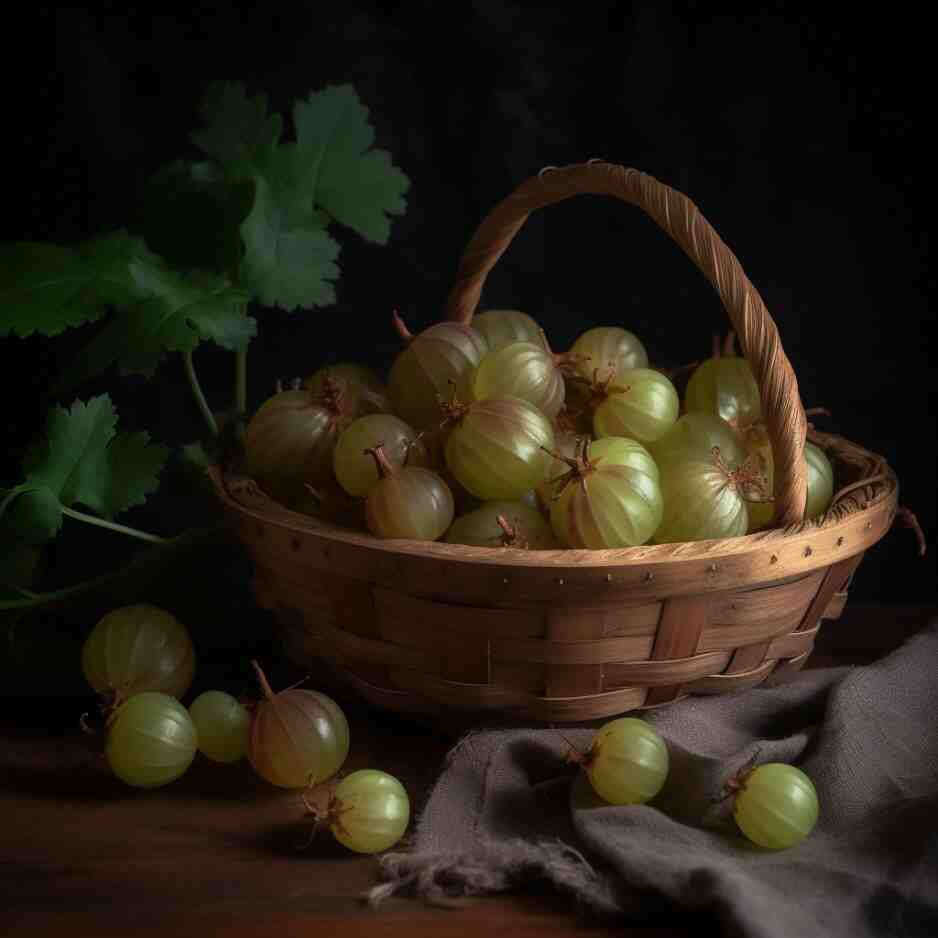
- Use gooseberries in a 1:1 ratio as a direct substitute for rhubarb.
- They naturally replicate rhubarb’s tart flavour, making them excellent in sweet bakes. </li><li>
Combine with sweeter fruits like strawberries if a milder flavour is preferred

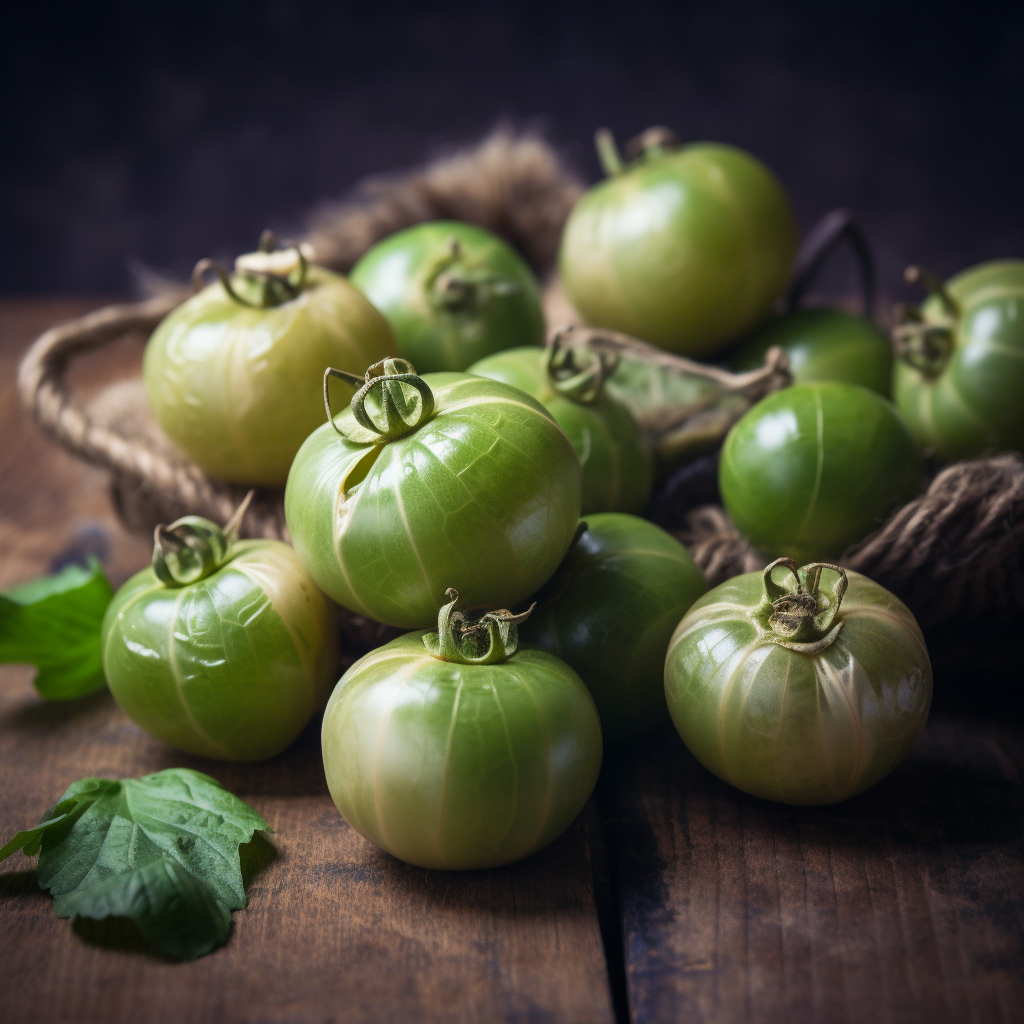
- Use tomatillos in a 1:1 ratio as a rhubarb substitute in savory recipes.
- Roast, boil, or sauté before blending into sauces or relishes.
- Combine with herbs, onions, or peppers for added depth.
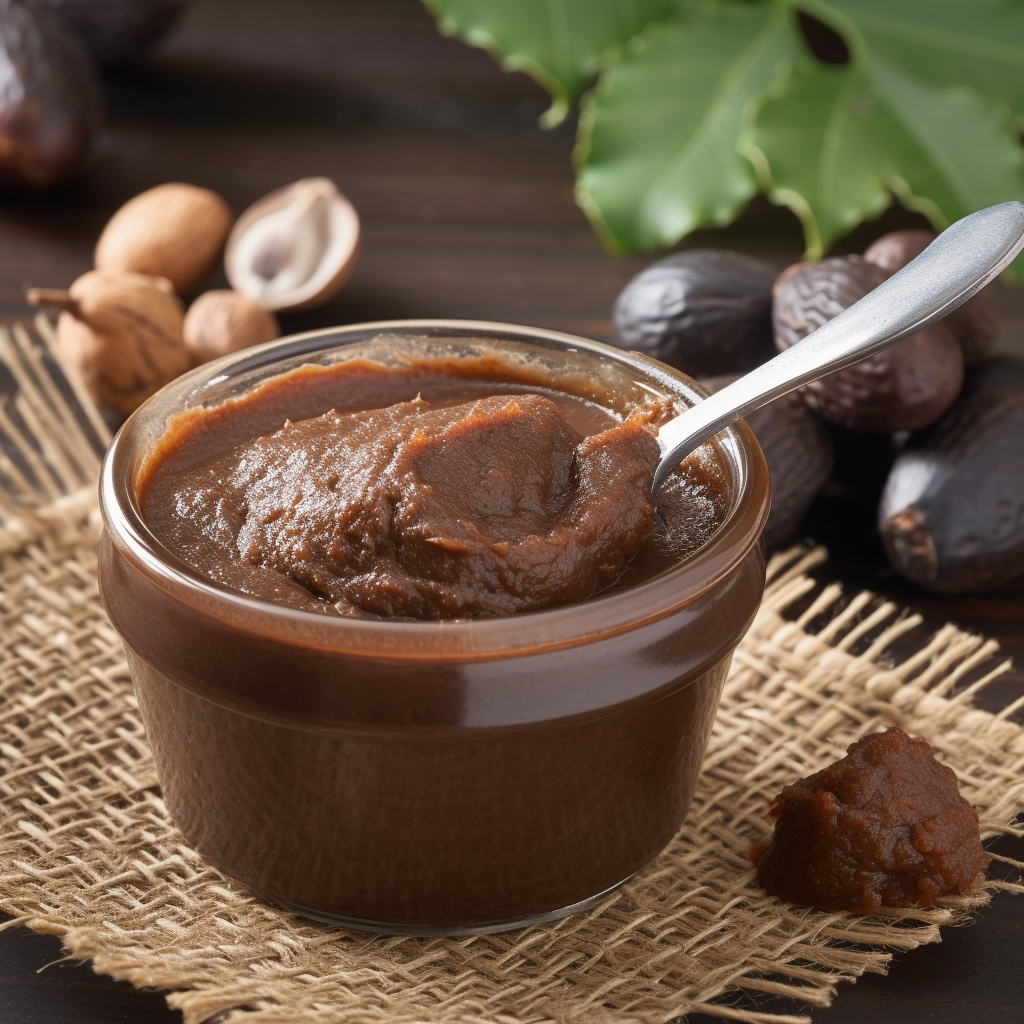
- Use 1–2 teaspoons of tamarind paste to replace rhubarb’s tang in sauces.
- Dilute with water or fruit puree for a balanced texture and flavour.
- Often combined with sugar or honey to mellow its intensity.
Rhubarb Substitute for Strawberry Rhubarb Pie
This is one of the most common queries. Here’s the best workaround:
Best Blend
- 1 cup strawberries
- ¾ cup cranberries
- 1 tbsp lemon zest or juice
Why It Works
- Cranberries replace rhubarb’s tartness
- Strawberries provide the fruity body
- Lemon mimics acidity
Adjust sugar to account for cranberries’ extra sharpness.
Best Rhubarb Substitute for Baking (Muffins, Cakes & More)
For Muffins & Quick Breads
- Use strawberries for moisture
- Add cranberries for tartness
- Dice pears for a soft texture
For Crumbles & Crisps
- Use green apples
- Combine with raspberries or strawberries for colour and sweetness
For Sponge Cakes & Scones
- Try gooseberries or diced apples
- Add grated lemon zest
Each substitute behaves slightly differently—so test bake for consistency.
Savoury Rhubarb Substitutes: Sauces, Chutneys & Salsas
Rhubarb isn’t just for sweets. It’s powerful in savoury dishes too.
Chutneys
- Use green apples + lemon juice
- Add raisins or ginger for flavour depth
BBQ Sauces
- Use tamarind paste + cranberry puree
- Add sugar and spices
Salsas
- Swap in tomatillos
- Add lime juice for acidity
- Include diced jalapeños for heat
These swaps offer complexity and a flavour punch similar to rhubarb.
How to Choose the Right Substitute Based on Recipe Type
| Recipe Type | Best Substitute |
|---|---|
| Pies & Crumbles | Green apples + cranberries |
| Jams & Compotes | Strawberries + lemon |
| Sauces & BBQ | Tamarind + cranberries |
| Salsas & Chutneys | Tomatillos or green apples |
| Muffins & Cakes | Gooseberries or pears |
Visual Comparison Chart: Nutrition & Flavour
| Fruit | Tartness | Texture | Color | Vitamin C (mg) |
|---|---|---|---|---|
| Rhubarb | High | Firm | Red | 8 |
| Green Apple | Medium | Firm | Green | 4.6 |
| Strawberry | Mild | Soft | Red | 58.8 |
| Cranberry | Very High | Firm | Red | 13.3 |
| Gooseberry | High | Soft | Green/Red | 27.7 |
Best Substitutes for Rhubarb
1. GREEN APPLES

Substitute for rhubarb in pies, crumbles, compotes, muffins & chutneys
Green apples are an excellent substitute for rhubarb in most recipes, especially in desserts where their texture and tartness shine. Green apples can substitute rhubarb in pies, crumbles, compotes, muffins, and chutneys.
Why It Works: Their tartness and firm texture mimic rhubarb when cooked.
How to Substitute:
- Use 1:1 ratio (e.g., 1 cup diced apples = 1 cup rhubarb).
- Add 1 tbsp lemon juice per cup to boost acidity.
- For colour: Mix with raspberries or cranberries.
Note: Green apples hold their shape better than rhubarb but need extra sugar in desserts.
Nutritional Comparison: Green Apples vs Rhubarb (Per 100g)
| Nutrient | Green Apples | Rhubarb | Notes |
|---|---|---|---|
| Calories | 52 kcal | 21 kcal | Rhubarb is significantly lower in calories. |
| Carbohydrates | 14 g | 4.5 g | Apples have 3x the carbs. |
| Fibre | 2.4 g | 1.8 g | Similar fibre content. |
| Sugar | 10.3 g | 1.1 g | Rhubarb is far less sweet. |
| Vitamin C | 4.6 mg | 8 mg | Rhubarb has almost 2x more vitamin C. |
| Calcium | 6 mg | 86 mg | Rhubarb is 14x higher in calcium. |
Key Takeaways from the Table:
- For low-calorie recipes: Rhubarb wins.
- For texture/structure: Green apples hold up better in baking.
- For tartness vs. sweetness: Rhubarb needs added sugar; apples may need lemon juice for acidity.
Important Notes:
- Rhubarb leaves are toxic – Only stalks are edible.
- Cooked vs. Raw: These values are for raw ingredients. Cooking may alter sugar content (e.g., caramelisation).
- Source: Data aligns with USDA FoodData Central and common nutritional databases.
2. STRAWBERRIES

Substitute for rhubarb cheese in jams, compotes, pies, muffins & crumbles
Strawberries offer a pleasant blend of tartness and sweetness, making them a popular choice to replace rhubarb in many recipes. Strawberries work well in sweet dishes, especially when paired with other fruits or used in jams and desserts. Strawberries can substitute rhubarb in jams, compotes, pies, muffins, and crumbles.
Why It Works: Their sweet-tart balance complements rhubarb’s flavour.
How to Substitute:
- Use 1.5x the amount (e.g., 1.5 cups strawberries = 1 cup rhubarb).
- Add 1 tsp lemon zest or 1 tbsp lemon juice to balance the sweetness.
Note: Strawberries soften more than rhubarb when cooked—add them later in baking.
Nutritional Comparison: Strawberries vs Rhubarb (Per 100g)
| Nutrient | Strawberries | Rhubarb | Key Notes |
|---|---|---|---|
| Calories (kcal) | 32 | 21 | Rhubarb is lower in calories. |
| Carbs (g) | 7.7 | 4.5 | Strawberries have slightly more. |
| Fibre (g) | 2.0 | 1.8 | Similar fibre content. |
| Sugar (g) | 4.9 | 1.1 | Rhubarb is far less sweet. |
| Vitamin C (mg) | 58.8 | 8 | Strawberries have 7x more vitamin C. |
| Calcium (mg) | 16 | 86 | Rhubarb has 5x more calcium. |
Key Takeaways:
- For vitamin C: Strawberries are the clear winner (great for immunity).
- For low-sugar needs: Rhubarb is ideal (but requires added sugar in recipes).
- For calcium: Rhubarb shines (uncommon for a fruit/vegetable).
3. CRANBERRIES

Substitute for rhubarb in sauces, chutneys and savoury dishes
Best for sauces, chutneys, and savoury dishes (e.g., BBQ glaze), cranberries have a tart and slightly sour taste, and their natural sugars are lower compared to other fruits. They are also a source of vitamin C, contributing to immune function and acting as an antioxidant.
Why It Works: Their intense tartness mirrors rhubarb’s sharpness.
How to Substitute:
- Use 1:1 ratio in sauces.
- For pies, mix with sweeter fruit (e.g., ½ cup cranberries + ½ cup apples).
Note: Cranberries are tarter than rhubarb—sweeten with honey or maple syrup.
Nutritional Comparison: Cranberries vs Rhubarb (Per 100g)
| Nutrient | Cranberries | Rhubarb | Key Differences |
|---|---|---|---|
| Calories (kcal) | 46 | 21 | Rhubarb has 55% fewer calories |
| Carbs (g) | 12.2 | 4.5 | Cranberries have nearly 3x more |
| Fibre (g) | 4.6 | 1.8 | Cranberries are higher in fibre |
| Sugar (g) | 4.04 | 1.1 | Both are low-sugar options |
| Vitamin C (mg) | 13.3 | 8 | Cranberries offer slightly more |
| Calcium (mg) | 8 | 86 | Rhubarb has 10x more calcium |
Key Takeaways from the Table:
- For low-calorie needs: Rhubarb wins (21 kcal vs. 46 kcal).
- For fibre content: Cranberries dominate (4.6g vs. 1.8g).
- For natural sweetness: Both are tart, but cranberries have slightly more sugar (4g vs. 1g).
- For calcium boost: Rhubarb is unmatched (86mg vs. 8mg).
- For immune support: Cranberries offer marginally more vitamin C (13.3mg vs. 8mg).
Important Notes:
- Oxalates Warning: Rhubarb contains oxalic acid (avoid leaves)
- Tartness Factor: Both are extremely tart – cranberries may need more sweetening in recipes
4. GOOSEBERRIES

Substitute for rhubarb in pies, jams & fresh snacks
Gooseberries have a tart flavour, similar to rhubarb, making them a potential replacement in various dishes. Gooseberries work well in dishes where their tartness is desired, especially in pies and jams. Gooseberries can substitute rhubarb in pies, jams, muffins, and certain chutneys.
Why It Works: Their tart-sweet profile and soft seeds resemble rhubarb.
How to Substitute:
- Use 1:1 ratio. No need for extra acid.
Note: Fresh gooseberries are seasonal—frozen work well too.
Nutritional Comparison: Gooseberries vs Rhubarb (Per 100g)
| Nutrient | Gooseberries | Rhubarb | Key Differences |
|---|---|---|---|
| Calories (kcal) | 44 | 21 | Rhubarb has 50% fewer calories. |
| Carbohydrates (g) | 10 | 4.5 | Gooseberries have 2x the carbs. |
| Fibre (g) | 4.3 | 1.8 | Gooseberries provide 2.4x more fibre. |
| Sugar (g) | 4.88 | 1.1 | Rhubarb is far less sweet. |
| Vitamin C (mg) | 27.7 | 8 | Gooseberries have 3.5x more vitamin C. |
| Calcium (mg) | 25 | 86 | Rhubarb has 3.4x more calcium. |
Key Takeaways:
- For low-calorie recipes: Rhubarb is the winner.
- For fibre & vitamin C: Gooseberries shine.
- For tartness: Both are tart, but gooseberries have a fruity-sweet edge.
- For calcium: Rhubarb is unmatched (great for bone health).
5. LEMONS

Substitute for rhubarb in compotes, sauces, beverages & cocktails.
Best For: Compotes, cocktails and salad dressings where acidity matters most, lemons are an excellent choice for adding tanginess to various dishes, especially in compotes and beverages. Lemons can substitute rhubarb in compotes, sauces, beverages, and cocktails.
Why It Works: Their zest/juice replicates rhubarb’s tang.
How to Substitute:
- Use 1–2 tbsp lemon juice + zest per cup of liquid in recipes.
Note: Lemons lack bulk—avoid in baked goods needing texture
Nutritional Comparison: Lemons vs Rhubarb (Per 100g)
| Nutrient | Lemons | Rhubarb | Key Differences |
|---|---|---|---|
| Calories (kcal) | 29 | 21 | Rhubarb is slightly lower |
| Carbohydrates (g) | 9 | 4.5 | Lemons have 2x the carbs |
| Fibre (g) | 2.8 | 1.8 | Lemons offer more fibre |
| Sugar (g) | 2.5 | 1.1 | Both are very low-sugar |
| Vitamin C (mg) | 53 | 8 | Lemons have 6.6x more vitamin C |
| Calcium (mg) | 26 | 86 | Rhubarb has 3.3x more calcium |
Key Takeaways:
- For vitamin C: Lemons are the clear winner (53mg vs 8mg)
- For calcium: Rhubarb dominates (86mg vs 26mg)
- For acidity: Both are tart, but lemons provide citrusy brightness
- Best uses:
- Lemons: Beverages, dressings, flavour enhancement
- Rhubarb: Baking, compotes where texture matters
Note: Values are for raw edible portions (lemon juice + zest; rhubarb stalks only). Cooking may alter some values.
6. TOMATILLOS
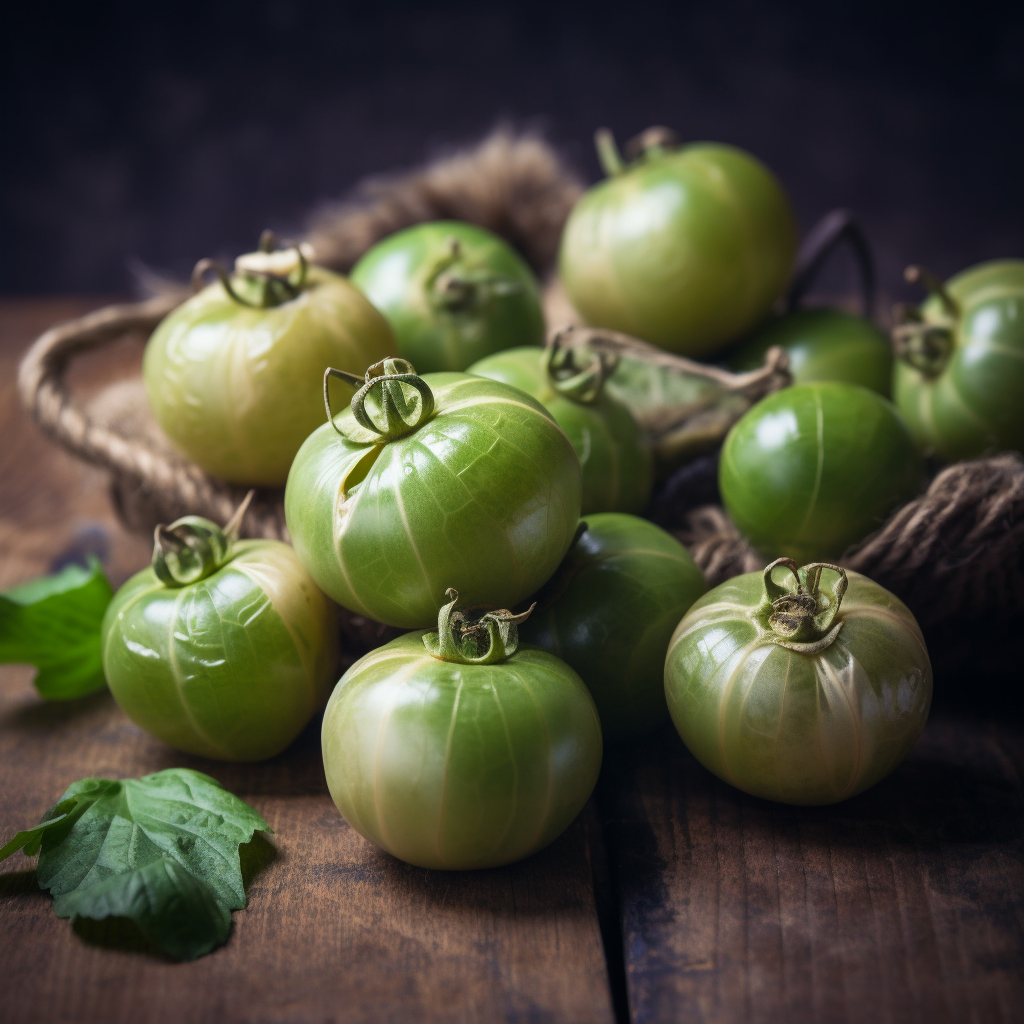
Substitute for rhubarb in salsas and verde sauce
Tomatillos shine in savoury dishes—especially Mexican-inspired salsas, sauces, and chutneys. They provide a mild tartness and soft texture similar to stewed rhubarb, without overpowering other ingredients.
Why It Works:
Tomatillos have a natural tangy and slightly citrusy flavour that mimics the acidity of rhubarb in savoury applications. When cooked, they break down to a consistency similar to rhubarb sauce.
How to Substitute:
- Use 1:1 ratio for rhubarb in cooked salsas or chutneys.
- Roast or simmer tomatillos before blending to enhance sweetness and reduce bitterness.
- Add herbs (like cilantro) and aromatics (onion, garlic) for depth.
Nutritional Comparison: Tomatillos vs Rhubarb (Per 100g)
| Nutrient | Tomatillos | Rhubarb | Key Differences |
|---|---|---|---|
| Calories (kcal) | 32 | 21 | Both are low-calorie |
| Carbohydrates (g) | 5.8 | 4.5 | Similar carb content |
| Fibre (g) | 1.9 | 1.8 | Nearly identical fibre |
| Sugar (g) | 3.9 | 1.1 | Tomatillos are slightly sweeter |
| Vitamin C (mg) | 11.7 | 8 | Tomatillos offer ~50% more |
| Calcium (mg) | 7 | 86 | Rhubarb has 12x more calcium |
Key Takeaways:
- Best for savoury dishes: Tomatillos (salsas, verde sauces)
- For tartness: Both are tart, but tomatillos are milder
- Unique benefits: Rhubarb for calcium; tomatillos for vitamin C
7. TAMARIND PASTE

Substitute for rhubarb in compotes, sauces, beverages & cocktails.
Tamarind is perfect for bold, flavour-packed sauces and South Asian or Middle Eastern dishes where sourness is essential. It works beautifully in curries, chutneys, BBQ sauces, and even as a flavour enhancer in vegetarian dishes.
Why It Works:
Tamarind paste offers a concentrated sweet-sour intensity that mirrors rhubarb’s tang but adds a deep, almost smoky undertone. A little goes a long way.
How to Substitute:
- Use ½–1 teaspoon of tamarind paste per tablespoon of rhubarb puree, depending on the recipe.
- Dilute with water or fruit puree for balanced thickness.
- Always taste and adjust—tamarind is potent!
Nutritional Comparison: Tomatillos vs Rhubarb (Per 100g)
| Nutrient | Tamarind Paste | Rhubarb | Key Differences |
|---|---|---|---|
| Calories (kcal) | 239 | 21 | Tamarind is much more calorie-dense |
| Carbohydrates (g) | 62.5 | 4.5 | Tamarind is high in natural sugars |
| Fibre (g) | 5.1 | 1.8 | Tamarind has 3x more fibre |
| Sugar (g) | 38.8 | 1.1 | Tamarind is very sweet |
| Vitamin C (mg) | 3.5 | 8 | Rhubarb has more vitamin C |
| Calcium (mg) | 74 | 86 | Comparable calcium content |
Key Takeaways:
- For intense tart-sweet flavour: Tamarind (use sparingly!)
- For low-calorie needs: Rhubarb is far lighter
- Best uses:
- Tamarind: Curries, pad Thai, chutneys
- Rhubarb: Desserts, compotes
Rhubarb Substitutes FAQs
Yes, but use 1.5x strawberries and add lemon zest to balance the tartness.
Green apples mimic rhubarb’s firmness and tartness well.
Absolutely—rhubarb is excellent in BBQ sauces, chutneys, and salsas.
Only in sauces or compotes. It doesn’t work well in baked goods due to its lack of bulk.
Yes, especially in sauces and chutneys. Use in small amounts for tang.
No, they are too savoury. Best used in salsas or savoury dishes only.
Conclusion: Rhubarb Substitutes for Every Occasion
Whether you’re baking a classic pie, whipping up a tart jam, or preparing a zesty chutney, rhubarb has plenty of powerful substitutes. From green apples and cranberries to gooseberries and tamarind, you can easily replicate rhubarb’s bold flavour and tartness across both sweet and savoury recipes.
Adapt the blend to your recipe’s needs—and don’t forget to balance tartness with the right amount of sugar or citrus.
